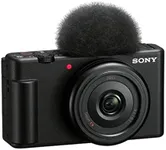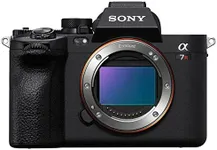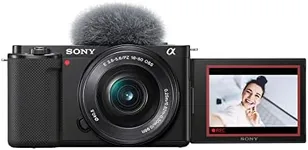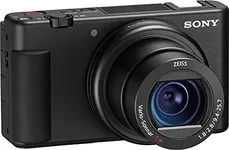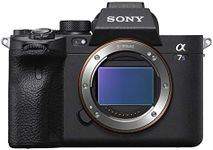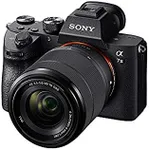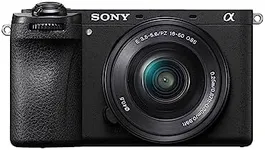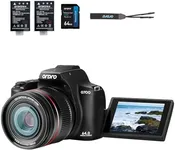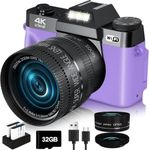Buying Guide for the Best Sony Photography Camera
Choosing the right Sony photography camera can be a rewarding experience if you know what to look for. The key is to understand your own needs and how different camera specifications can meet those needs. Whether you're a beginner, an enthusiast, or a professional, there are certain specs that will be more important to you than others. By focusing on these key specifications, you can find a camera that will help you capture the best possible photos for your particular style and requirements.Sensor SizeThe sensor size of a camera is crucial because it affects the image quality, depth of field, and low-light performance. Larger sensors, like full-frame sensors, capture more light and detail, making them ideal for professional photography and low-light conditions. APS-C sensors are smaller but still offer excellent quality and are often found in mid-range cameras, making them a good choice for enthusiasts. For beginners or casual photographers, smaller sensors like those in compact cameras can be sufficient and more affordable.
MegapixelsMegapixels refer to the resolution of the camera's sensor, determining how much detail the camera can capture. Higher megapixels mean more detail, which is beneficial for large prints or cropping images without losing quality. Cameras with 20-30 megapixels are generally sufficient for most photographers, providing a good balance between detail and file size. For professional photographers who need extremely high resolution, cameras with 40+ megapixels might be necessary. However, for everyday use and sharing photos online, even 12-16 megapixels can be more than adequate.
Lens CompatibilityLens compatibility is important because it determines the range of lenses you can use with your camera. Sony cameras use different mounts, such as E-mount for mirrorless cameras and A-mount for DSLRs. Mirrorless cameras with E-mount are more versatile and have a wider selection of lenses, making them a popular choice for most users. If you already own lenses from a particular mount, it might be wise to choose a camera that is compatible with those lenses. For beginners, starting with a camera that comes with a versatile kit lens can be a good way to learn and grow.
Autofocus SystemThe autofocus system determines how quickly and accurately the camera can focus on a subject. This is especially important for action, wildlife, and sports photography. Cameras with advanced autofocus systems, featuring numerous focus points and fast tracking capabilities, are ideal for capturing moving subjects. For general photography, a reliable autofocus system with fewer focus points can still provide excellent performance. Beginners might not need the most advanced autofocus, but as you progress, having a camera with a good autofocus system can make a significant difference.
ISO RangeThe ISO range of a camera indicates its sensitivity to light, affecting its performance in different lighting conditions. A wider ISO range allows for better performance in low-light situations without needing a flash. Cameras with an ISO range of 100-3200 are typically sufficient for most daylight and well-lit indoor photography. For low-light or night photography, a camera with an extended ISO range, such as 100-12800 or higher, can be beneficial. However, higher ISO settings can introduce noise, so it's important to find a balance based on your specific needs.
Video CapabilitiesIf you plan to shoot videos in addition to photos, the camera's video capabilities are important. Look for features like 4K resolution, frame rates, and video-specific settings. Cameras with 4K video recording offer high-quality footage and are becoming standard in many models. For casual video recording, Full HD (1080p) might be sufficient. Additionally, consider features like microphone input, headphone jack, and in-body stabilization if you are serious about videography. For occasional video use, basic video capabilities will suffice, but for more professional work, advanced video features are essential.
Build Quality and ErgonomicsThe build quality and ergonomics of a camera affect how comfortable it is to use, especially during long shooting sessions. Cameras with a robust build, weather sealing, and a comfortable grip are ideal for outdoor and travel photography. For studio or casual use, a lighter and more compact camera might be preferable. It's important to handle the camera before purchasing to ensure it feels right in your hands. Beginners might prioritize ease of use and portability, while professionals might look for durability and advanced controls.
Battery LifeBattery life is an important consideration, especially if you plan to shoot for extended periods or in remote locations where recharging might not be possible. Cameras with longer battery life allow you to shoot more without interruption. Mirrorless cameras typically have shorter battery life compared to DSLRs, so carrying extra batteries can be a good idea. For casual photographers, a camera with moderate battery life might be sufficient, but for professionals or travel photographers, longer battery life is crucial.
ConnectivityConnectivity options like Wi-Fi, Bluetooth, and NFC allow you to easily transfer photos to your smartphone or computer, and can also enable remote control of the camera. This is particularly useful for social media sharing, backup, and remote shooting. Cameras with built-in Wi-Fi and Bluetooth are convenient for most users. For those who frequently share photos online or need to transfer images quickly, these features can be very beneficial. Beginners might not need advanced connectivity options, but they can be a nice addition as you become more experienced.

